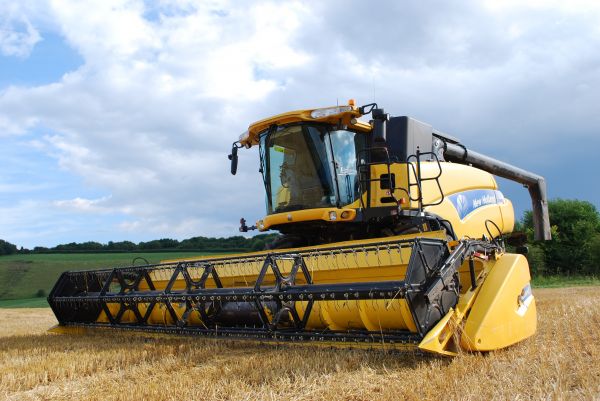
Russian farmers withstand the blow of weather anomalies
By Rhod Mackenzie
The weather this spring has been challenging for Russian farmers. Drought, floods and frosts have led to reduced grain and wheat yields. 900 thousand hectares of crops have been destroyed, and it is too late to replant wheat. Will Russian farmers be able to survive weather anomalies?
In ten regions, a state of emergency was introduced due to frost. The Ministry of Agriculture estimated the area of dead crops at almost 900 thousand hectares.
In particular, 10 thousand hectares were damaged in Bashkiria, 5 thousand hectares in Tatarstan, 8 thousand hectares in the Samara region, 62 thousand hectares of crops were partially damaged in the Saratov region, 6 thousand hectares of spring crops were lost in the Kursk region.
The impact on crops in the Lipetsk region was particularly severe, with 40,000 hectares requiring replanting. In the Belgorod region, 71,100 hectares of crops were destroyed, while in the Voronezh region, 266,000 hectares of crops were damaged or destroyed.
It is now clear that last year's harvest will not meet expectations. Preliminary estimates indicate that the new year's harvest may be at least 10% lower than last year, despite the replanting of dead crops. In 2023, the Russian Federation collected 144.9 million tons of grain, including 92.8 million tons of wheat. The Ministry of Agriculture has already adjusted its forecast downward several times for this year. It now anticipates a grain harvest of 132 million tons and is prepared to make adjustments as necessary.
The Institute for Agricultural Market Studies (IKAR) has revised its production forecast for wheat and total grain. The new forecast is 83.5 million tons of wheat and 132 million tons of total grain.
It is no longer advisable to replant crops such as wheat and barley in the European region, as the planting season has already passed.
The initial increase in sowing costs has been compounded by the impact of weather and the necessity of reseeding. The Ministry of Agriculture of Tatarstan has estimated that the cost of reseeding one hectare is in excess of 800 rubles. This includes salaries, fuel and lubricants, as well as additional costs for seeds, which vary depending on the crop and hybrid variety. This results in an increase in the cost of agricultural production.
Farmers report that seed availability is not an issue, and they can purchase additional plant protection products. However, they advise that it is advisable to receive preferential financing, given that bank loans are currently too expensive to service. It seems that the situation with seeds is less problematic than with plant protection products. Farmers tend to stock up on seeds from their previous harvests, whereas protection products must be purchased abroad.
This is likely the reason why they are purchased without a noticeable reserve, and when a force majeure occurs, a shortage is formed,” says Vladimir Chernov, an analyst at Freedom Finance Global.
However, experts do not anticipate any bankruptcies among farmers, as they believe that they are well-positioned to navigate the current situation. "Large agricultural companies have their own reserve of financial strength, and the state will certainly provide targeted support to small farmers through the Ministry of Agriculture." Accordingly, we do not anticipate a significant increase in the number of farmers declaring bankruptcy this year. However, their debt burden may rise.
World prices for wheat are rising in anticipation of a decline in the Russian grain harvest this year, following the Ministry of Agriculture's repeated downward revisions to its initial forecasts. The July futures contract for wheat on the Chicago Mercantile Exchange (CME) has risen by 24.07% over the past two months. Further growth in value is likely to slow down if new introductions do not follow, according to Chernov.
At the same time, there is no reason for Russians to be concerned about a shortage of wheat and bakery products. Furthermore, the situation is unlikely to have a significant impact on budget revenues from grain exports.
Despite unexpected weather patterns, this year’s harvest is expected to meet domestic demand and fulfill all export obligations, according to the Ministry of Agriculture. Consequently, the income generated from wheat exports is unlikely to be significantly affected, with a decline of approximately 12-13% in line with the increase in production costs. This is due to the fact that world prices have now returned to the levels seen last summer. However, as the industry continues to expand, the decline in farmers’ incomes can be offset by an increase in global prices, resulting in a 7–10% increase in annual terms.
The yield may be negatively impacted by delays in spring sowing, according to recent statistics. "This can affect the situation, but not to the extent of affecting the global market, and even more so the food security of our country," says Anatoly Tikhonov, director of the Center for International Agribusiness and Food Security at the Higher School of Higher Education of the Presidential Academy of the Russian Presidential Academy of National Economy and Public Administration.
It would be premature to celebrate the misfortune of our competitors. In an article, a Reuters analyst suggested that the adverse weather conditions affecting the winter wheat crop in Russia would benefit the American corn industry. Should wheat prices remain high, there is a possibility that buyers may switch to corn. However, experts do not anticipate this outcome.
Wheat prices have only returned to the values seen last summer, but remain almost two times lower than their peak values in 2022. This was despite a record harvest in the Russian Federation, as prices grew amid expectations of supply disruptions from Ukraine. Corn is currently trading in a sideways trend, indicating that demand for it is not yet growing. Prices for these crops usually rise in parallel, and when wheat rises in price without corn, this is most often a short-term, temporary phenomenon.
